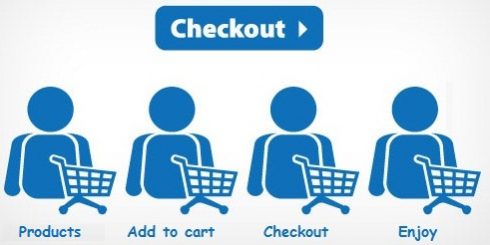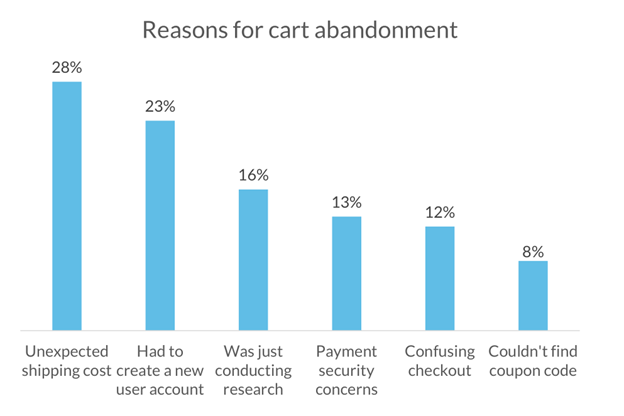Consumers love taking advantage of online shopping opportunities. They don’t have to leave the comfort of their house; they can quickly compare prices, competing products, and take advantage of any deals. Shopping online can be a great experience, with quality and properly established e-commerce websites.
Online shopping is not always a great experience. When a websites is not properly designed and developed, consumers can quickly jump out and never visit the specific website again. To increase online sales and reduce shopping cart abandonment, businesses must have their checkout process properly setup and designed. Here are 10 checkout process design tips for e-commerce websites.
10 Checkout Process Design Tips For E-Commerce Websites
1. Never force registration to shop.
Consumers do not want to be required to sign-up with a website in order to shop. This drastically reduces online sales. Retailers that want to not lose customers on this should never force registration to shop.
2. Don’t be shy with product photos.
Often retailers use only 1-2 product photos per item they sell. For better results, don’t be shy with product photos. Retailers that use high quality and professional photos, as well as multiple per product see much better sales conversions.
3. Have check out functions well placed.
Consumers can get quickly annoyed and move on. One thing that is certainly annoying to most is having to look for the checkout functions and features on a website. Retailers should have the checkout functions placed in the header and repeated when necessary throughout key pages.
4. Include product and customer reviews.
Most professional marketers know how effective product and customer reviews are for e-commerce sales. Yet, many retailers do not have them. Each product listed in the online store should have a link to its reviews. Then, efforts should be made to publish as many reviews as possible there.
5. Use proper shopping cart applications.
Not all online shopping carts are the same. There tends to be lots of confusion about leased (hosted) solutions and open-source, or more customized shopping carts. For best results, use the right solution for your business.
6. Keep the checkout process short.
Depending on solutions used the checkout process may be longer or shorter. It is simple! The shorter and simpler the checkout process is, the better chances at sales conversion. Keeping the process short improves conversion. Avoid unnecessary “customer click” requirements and have clearly designed shopping pages.
7. Display support options clearly.
Even though it is e-commerce and an online business, consumers want to know that there are real people behind the business. They want to be able to trust the source of their shopping activity. Displaying in the header of the website, phone numbers, email, and other contact methods improves conversion.
8. Offer plenty of payment methods.
Limiting consumers with payment methods, limits the retailer in online sales. For improved online sales, offer consumers plenty of payment methods such as Visa, MasterCard, PayPal, and other options. Display these options in key areas of the website for best results.
9. Showcase any guarantees and certifications.
If a company has any certifications and/or offers guarantees, those should be well displayed and showcased through key website pages such as the home page and certain shopping pages. These will increase further trust with consumers and improve conversion rates.
10. Follow-up with all customers.
Often overlooked by companies, retailers should follow-up with all customers. Even customers who have not completed a purchase yet, should be contacted and offered assistance if needed. All customers that have made a purchase should receive a nice email and confirmation, with additional follow-up.
Companies and businesses that want to ensure that they deploy the best possible e-commerce website with online sales conversion tools and proper design can always work with professionals. Experienced professionals know what works and what does not. They take the guessing out of the picture. Website design professionals with plenty of e-commerce experience can help to ensure better results.









